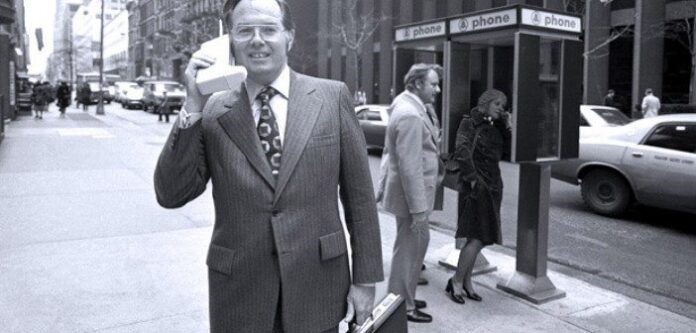Editor’s Note: RCR Wireless News goes all in for “Throwback Thursdays,” tapping into our archives to resuscitate the top headlines from the past. Fire up the time machine, put on those sepia-tinted shades, set the date for #TBT and enjoy the memories!
Smithsonian honors 75th anniversary of the invention of the transistor with ‘virtual’ exhibit
Oct. 8, 2022. Washington, D.C. The Smithsonian exhibit on the Age of Multimedia: 1994-2008 opened for public viewing in the Gore Digital Museum complex located in the old Department of Agriculture Building. This year marks the 75th anniversary of the invention of the transistor, a milestone in the dawn of the Information Age. The term “multimedia” implies a hidden comparison to single forms of media. Electronic information was first expressed through visual and/or audio input that was complementary rather than integrated. Information appeared as text, video, or audio. Individuals communicated electronically using one or two of these formats. Multimedia involves weaving all three together. The exhibit is composed of three modules: the technology that spawned multimedia, and the impact this information form had on American business and on the personal lives of Americans. The technology exhibit begins with a virtual walk through one of the first transistors developed by Bell Laboratories, then still a subsidiary of AT&T Corp. … Read more
Qualcomm releases its first mobile phone
Gearing up for upcoming personal communications services auctions, Qualcomm Inc. has introduced several products based on its Code Division Multiple Access digital technology, including the company’s first portable phone for the PCS market. Qualcomm’s eight ounce QCP-1900 transmits radio frequency power at extremely low levels, giving the phone five hours of talk time and 72 hours of standby time on a single battery, surpassing power capabilities of many high-end cellular handsets by more than four times, according to Qualcomm. The new portable also provides broad coverage and extended capacity. The phone uses Qualcomm’s 13 kilobit per second voice coding option, designed to provide voice clarity comparable to that of a wired phone, according to the company. Other features in the QCP-1900 are 10-number speed dialing, auto redial and answer, 99 memory storage units with alphanumeric tagging, and 32-digit dialing. A separate memory retains the last 10 calls. … Read more
FCC looks to improve 911 services as mobile cellular use increases
WASHINGTON-With the number of people using mobile telephones increasing each year, federal regulators want to improve 911 emergency service for calls made over the airwaves, and could force carriers that fail to meet future government standards to put warning labels on handsets indicating their limited capability. “The commission has no greater responsibility to protect life and health,” said Commissioner Susan Ness at a Federal Communications Commission’s meeting last month. Today, cellular phones are becoming a popular public-safety tool, accounting for a half million 911 calls every month. That figure is expected to skyrocket in coming years as cellular, personal communications services, specialized mobile radio and mobile satellite phones make their way to the mass market. … Read more
Motorola intros wireless radio system for campus use
SEATTLE-Motorola Inc.’s Cellular Infrastructure Group has introduced a new radio telephone system called INReach that keeps people connected in large industrial facilities, airports or convention centers, using cellular telephones rather than proprietary handsets. INReach interconnects with the building’s private branch exchange system, so typical cellular user fees don’t apply. “This technology allows customers to extend the mobility and tetherless capability of cellular communications to in-building (use),” said Marty Singer, vice president of business development and planning for Motorola’s Cellular Infrastructure Group. Guests at large hotels or resorts can keep in touch with the front desk. Highly mobile employees can carry INReach phones as an extension of their desk phone. … Read more
Illinois Superconductor improves base station interference mitigation with new tech
Illinois Superconductor Corp. said it has introduced an interference filter for cellular base station receivers that uses superconductor technology, enabling the base station to hear weaker signals more clearly. Superconductivity involves cooling certain metals and alloys to a very low temperature so electrical currents can be transmitted without resistance. Illinois Superconductor’s filter rejects undesired radio signals, making the radio receiver’s sensitivity greater and allowing weak signals to be heard with greater clarity, according to the Evanston, Ill.-based company. The technology is a spinoff from Argonne National Laboratory, and the filter is the first product of its kind to use superconductor experience in commercial technology, the company said. Even though Illinois Superconductor’s filter operates on the “high temperature” end of superconductivity, the product must still be cooled at lower than minus 300 degrees Fahrenheit. The company hopes to adapt the cryogenic refrigerator for commercial filter use, said Ora E. Smith, company president and chief executive officer. … Read more
Check out the RCR Wireless News Archives for more stories from the past.

